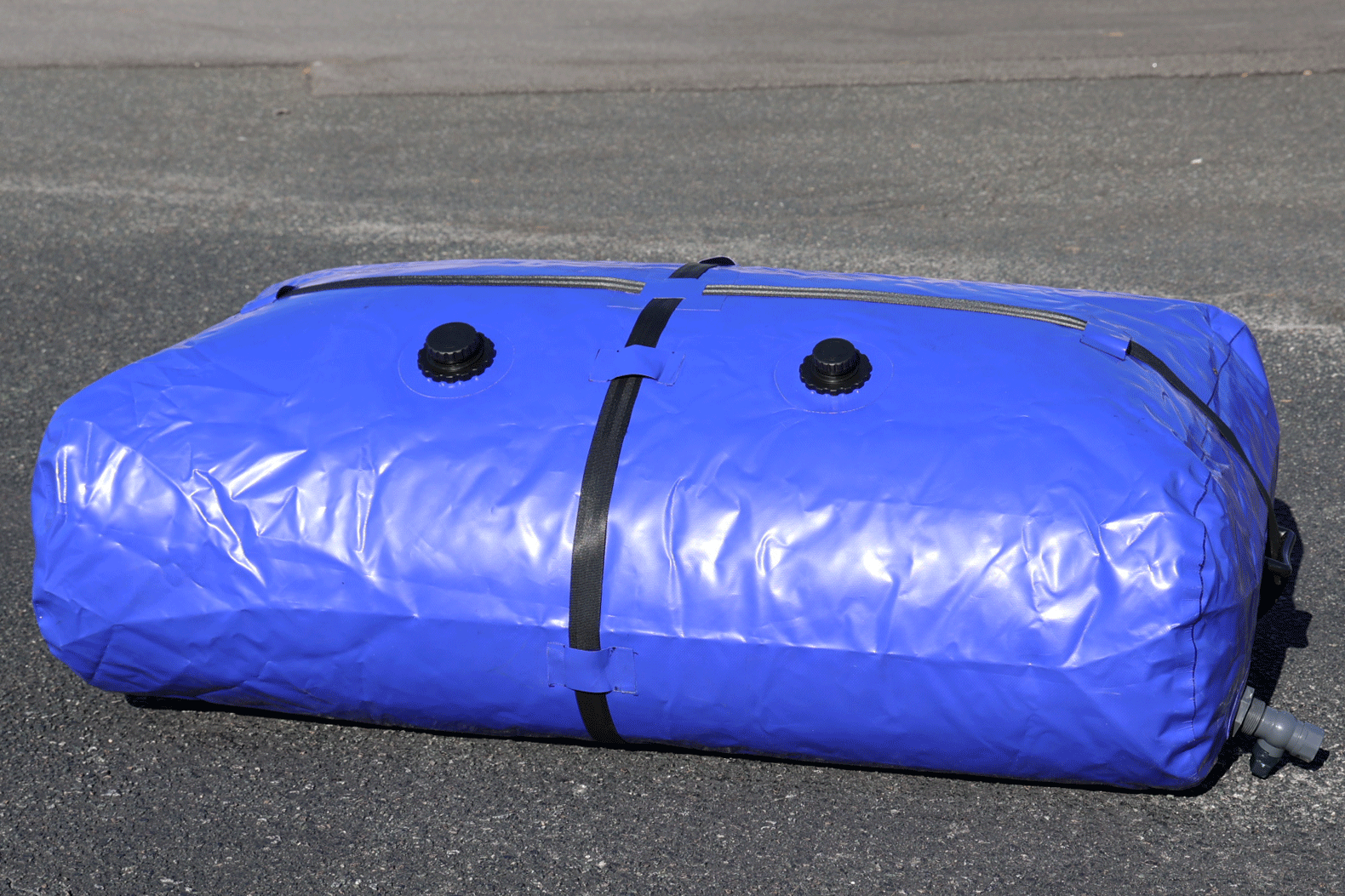
Securing Your Tent: Anchoring Options
Wednesday May 22, 2024
And now for the third installment on how to set up an inflatable tent for success. After inflating your tent, you’ll need to secure it properly. Depending on the environment and ground your tent is on matters greatly.
Although stakes are the most stable option when your tent is inflated on a grassy area, other anchorage options are available for those setting up on gravel or concrete.
Let’s explore some anchor methods and options!
Water Barrels or Water Bladders are containers that once filled with water, work as a weighted anchor. The more water used to fill the barrel, the heavier it is, allowing for substantial anchorage. On one hand, water barrels are easy to transport and position, while on the other hand depending on the material, they can move more than you’d want them to.
Keep in mind water bladders are more inclined to excess movement. Say you have a medium-sized inflatable tent needing an anchorage capacity of 5,400 pounds. If a bladder holds 55 gallons, its final weight is around 480 pounds, but this is not the most accurate measurement of anchorage ability since the risk of friction is involved. A generally smooth plastic bladder may have a friction coefficient of 0.4, making the effective weight of the full bladder only 192 pounds.
Not only does the risk of friction change the equation, but the point of security in terms of height matters. For instance, a stake will go 6” into the ground to enhance stability while a water bladder will sit atop the ground. This decreases the water bladder stability and increases the number of water barrels needed for a strong anchoring capacity.
Our water bladders hold 130 gallons, weighing approximately 1,000 pounds when filled with water. With a friction coefficient of 0.4, the capacity of a water barrel would be 400 pounds. Sitting atop the ground, they lose some stability, making the number of necessary water barrels approximately 20.

A simple option for anchoring is a concrete block. While this is a traditional option, providing strong anchorage and easy to source, they can be labor intensive when moving and securing.
For a more stable anchoring, having two 500-pound concrete blocks on each corner allows for a 4,000-pound anchoring capacity. While other weights are available, increasing from 500 pounds is a good start.
Next, we have sandbags. Made from woven polypropylene, they are durable and an economical choice. Strong and tear-resistant, sandbags can conform to the environment around them, providing stable security to the tent. While they are easy to transport when empty, a large quantity is necessary for effective anchoring and regular replacement could be a hurdle.
Using sandbags of 50 pounds, having at least 50 would grant an anchoring capacity of 2,500 pounds, making this option a tedious one solely based on the quantity of material needed. Like water bladders, the material and shape of these anchors can make surefire stability more difficult.
Drive-on plates are a unique and simple option for anchoring a tent. Made from metal and easily attached to tent straps, these plates are placed on the ground and driven onto by a vehicle. Simple to use and efficient to put up and take down, these plates are a solid choice for anchoring.

With the average vehicle weighing around 6,000 pounds, utilizing four drive-on plates on each corner of the tent allows an anchoring capacity of 24,000 pounds, making drive-on plates a solid choice for anchoring capacity.
Choosing the proper anchorage option for an inflatable tent depends on factors like the intended use, location, and budget. Water barrels, concrete blocks, sandbags, and drive-on plates are all useful options, each with advantages and disadvantages. Understanding this can help you choose the most suitable anchorage method to ensure the stability and safety of inflatable tents in different settings.
Thanks for joining us for our series on securing inflatable tents! If you have questions about your tent or accessories, please reach out!